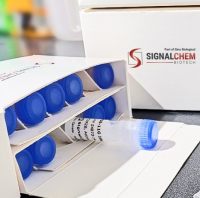Embryological Methods in Ascidians: The Villefranche-sur-Mer Protocols
互联网
470
Ascidians (marine invertebrates: urochordates) are thought to be the closest sister groups of vertebrates. They are particularly attractive models because of their non-duplicated genome and the fast and synchronous development of large populations of eggs into simple tadpoles made of about 3,000 cells. As a result of stereotyped asymmetric cleavage patterns all blastomeres become fate restricted between the 16- and 110 cell stage through inheritance of maternal determinants and/or cellular interactions. These advantageous features have allowed advances in our understanding of the nature and role of maternal determinants, inductive interactions, and gene networks that are involved in cell lineage specification and differentiation of embryonic tissues. Ascidians have also contributed to our understanding of fertilization, cell cycle control, self-recognition, metamorphosis, and regeneration. In this chapter we provide basic protocols routinely used at the marine station in Villefranche-sur-Mer using the cosmopolitan species of reference Ciona intestinalis and the European species Phallusia mammillata . These two models present complementary advantages with regard to molecular, functional, and imaging approaches. We describe techniques for basic culture of embryos, micro-injection, in vivo labelling, micro-manipulations, fixation, and immuno-labelling. These methods allow analysis of calcium signals, reorganizations of cytoplasmic and cortical domains, meiotic and mitotic cell cycle and cleavages as well as the roles of specific genes and cellular interactions. Ascidians eggs and embryos are also an ideal material to isolate cortical fragments and to isolate and re-associate individual blastomeres. We detail the experimental manipulations which we have used to understand the structure and role of the egg cortex and of specific blastomeres during development.









